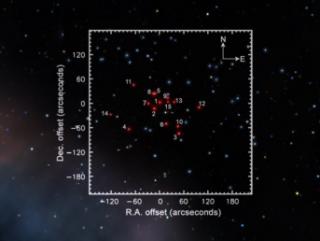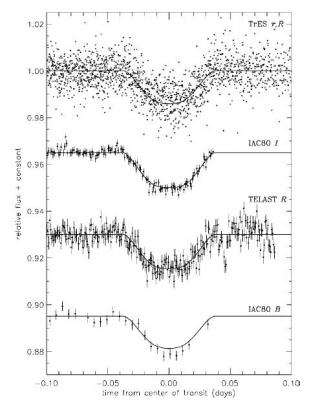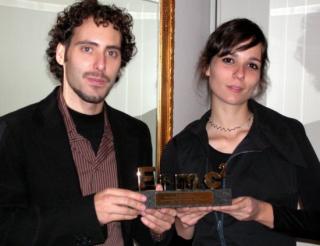
LIRIS, the IR imaging camera and spectrograph built by the IAC, is giving life to new projects. During 2006 advances were made in the search for and analysis of IR clouds. RSG1 is shown in Figure 1. It is a cloud with fourteen red supergiants, (indicated in the figure, together with the relative coordinates at the centre of the cloud), implying that the it has a mass of 2-4 x 104 M¤. This would make it one of the most massive clouds in the Milky Way. Figure II shows the cloud ID066. The centre of the cloud can be seen with an extinction zone around it, which could have come from the original
Advertised on
![Composite image of the Orion Nebula in the [NII], Ha and [OIII] emission lines, codified respectively in red, green and blue. The details in black and white, to the side, illustrate the fields of motion divided into two zones of the nebula during the extr Composite image of the Orion Nebula in the [NII], Ha and [OIII] emission lines, codified respectively in red, green and blue. The details in black and white, to the side, illustrate the fields of motion divided into two zones of the nebula during the extr](/sites/default/files/styles/crop_square_2_2_to_320px/public/images/news/resultados2_2.jpg?itok=qqtpoCD5)

